Baghpat: Most goats begin their day with cud-chewing, but the morning routine is much more ceremonious at the bakrashala in Baghpat’s Aminagar Sarai. At daybreak, the shelter workers file in with buckets. First, they wash the faces of the goats and then make them gargle with phitkari, or alum. After that, they pour fresh water into the marble troughs, serve a snack of fodder, and at 9 am sharp, escort the goats for a three-hour morning walk.
The Uttar Pradesh bakrashala is busy all day long. The workload has shot up since the arrival of goats that were “rescued” ahead of Bakrid last month— including the famous 124 goats acquired clandestinely by Chandni Chowk Jains posing as Muslims. Now, the goats are having the best time of their lives, enjoying morning showers, walks, evening snacks, and regular health check-ups.
At noon Monday, caretaker Mohammad Iqbal, 65, opened the gate to welcome back the hundreds of goats returning from their morning adventures, guided gently to their shed by half a dozen men wielding slender tree branches.
“It’s time for their lunch,” announced Iqbal, as the men filled the iron taslas (deep bowls) with fodder. After that, the animals were taken to rest until their evening walk at 6 pm.
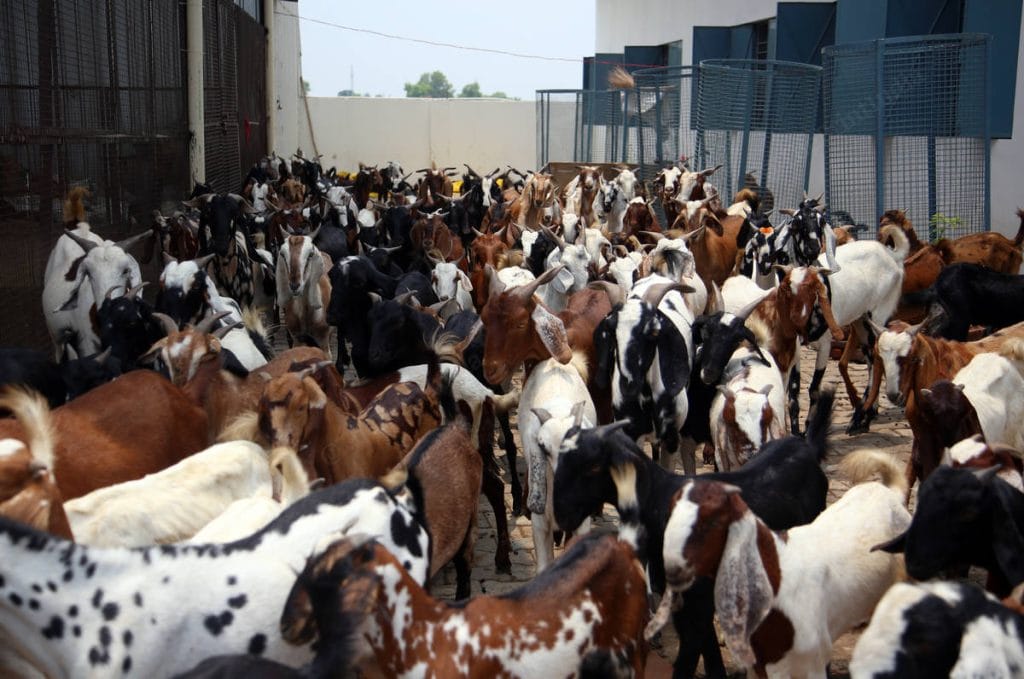
The bakrashala (goat shelter) was opened by the Jeev Daya Sansthan, an NGO run by the Jain community, some six years ago. Its mission is to provide a home to goats “rescued” during Bakrid every year by purchasing them from meat mandis.
The shelter started with 50 goats in 2018. Today, it houses 700, of which 500 were brought in from western UP and Delhi this year. The goats were first isolated at a smaller bakrashala for 15 days and then transferred to their current residence, built on 4,500 gaj (around 40,000 sq ft) of land in 2017 after the Jain organisation decided to expand their “goat rescue operations”. Around 15 people from nearby villages are employed to care for these goats.
“We can accommodate over 5,000 goats at this shelter house. All these goats have been saved during Bakrid since 2018, including the Chandini Chowk goats, said Sachin Jain, trustee of Jeev Daya Sansthan. “Our intention is to save as many goats as possible so these innocent animals are not killed. Not even a single goat from here is slaughtered. These goats live their lives, and die their own death.”
Feeding the goats requires substantial funds; the first 15 days of June alone saw the shelter spending Rs 2.5 lakh on fodder, said supervisor Jain.
Also Read: Rural Haryana is at war with love marriage—brother shoots sister, boasts on Instagram with gun
‘These goats are our god’
As the goats return to a cavernous shed after their morning walk, water starts spraying from the sprinkler head attached to the roof. Ceiling fans cool the air and Jain prayers waft on loop from speakers. It’s almost like a spa for goats.
“It’s hot outside, so the water is sprinkled for the goats to feel good,” said Iqbal, holding one of the goats by its ear to take it to another shed.
In this adjoining shed, three doctors vaccinate goats against a common viral disease called Peste des Petits Ruminants (PPR). As they receive the injections, Iqbal pats them reassuringly, after which he takes them to the isolation room.
Iqbal, a resident of Aminagar Sarai, joined the goat shelter two months ago. His job involves ensuring the goats are taken out on walks and are well-fed. Being the only breadwinner in his family, Iqbal says he had no other option but to work here.
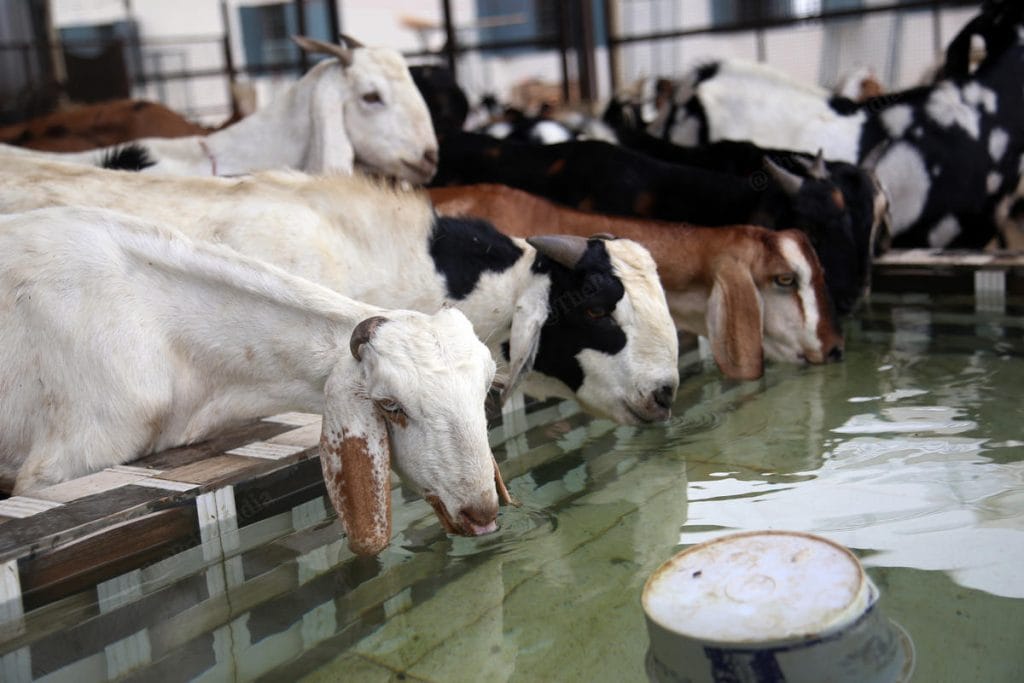
“My wife is unwell and my children do nothing, so I have to run my family. There are no jobs in the market and I am 65 years old. So, I have come for the seva of these goats,” he added.
Iqbal earns Rs 12,000 every month for working 12 hours at the goat shelter. By the end of the day, he is too exhausted to even have a chat with his wife and falls asleep as soon as he reaches home. The next morning, he has to reach the shelter at 7 am.
I don’t take any money for supervising the goats here. I do it with seva bhav as our guru wanted us to do. Saving lives is the biggest reward
-Sachin Jain, bakrashala supervisor
“Whatever fills your stomach is your god. Right now, these goats are our god. And the kind of life they live here is not possible for many people in this country,” he said, smiling.
Of 15 employees at the goat shelter, two are Muslims—Iqbal and Mohd Raja. There’s one Jain supervisor, while the rest are Hindus.
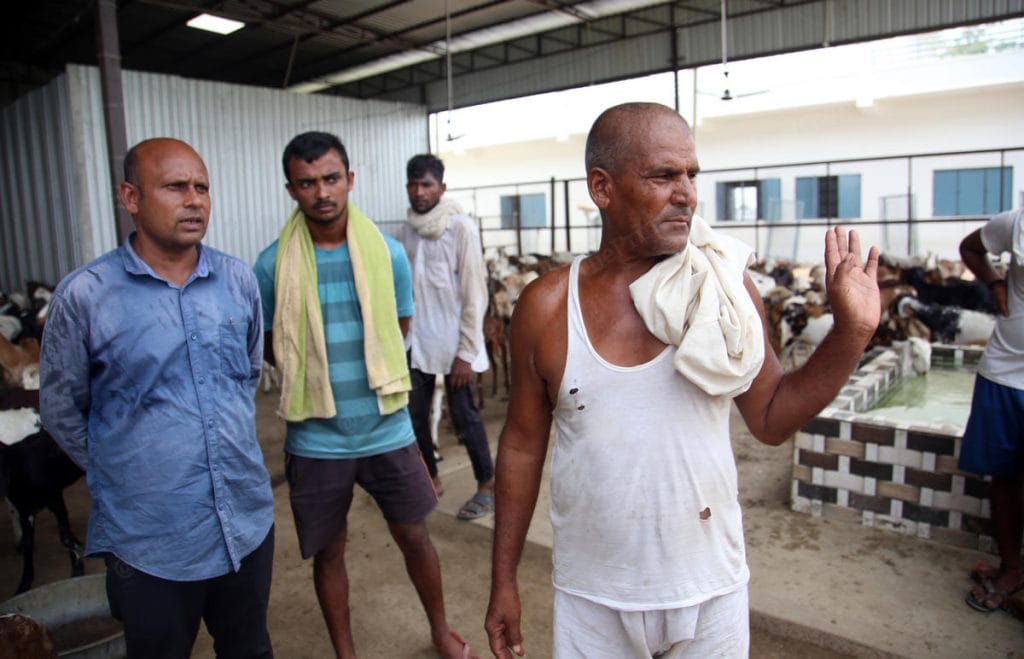
“I don’t take any money for supervising the goats here. I do it with seva bhav as our guru wanted us to do. Saving lives is the biggest reward and I don’t want to take money for that,” said the supervisor, whose name is also Sachin Jain.
Also Read: Noida has a thriving black market in farmhouses. Delhi’s partying rich are driving it
Life & death at the shelter
Veterinarian Dr Shashi Kant Sharma, from the neighbouring Hisawada village, visits the goat shelter every day for three hours. During his time here, he identifies goats showing symptoms of PPR.
“It’s like pneumonia, a plague that attacks goats every year during severe summers and winters,” said Sharma, adding that he checks the animals’ eyes for signs of fever and also looks for other symptoms like drooling.
All the goats here receive vaccinations against the disease, but PPR has still exacted a heavy toll. More goats at the shelter have died from the disease than survived it.
Sharma pointed out that given the number of goats rescued each Bakrid, the shelter should have had more than 2,000 animals. However, there are only 700 goats currently, of which 70 are isolated at a smaller goat shelter located at the entrance of Aminagar Sarai.
“Last month alone, we witnessed the deaths of 50 goats. This disease is severe, and only goats with high immunity are saved. We are trying to save as many as we can,” Sharma said, as he injected another vaccine into a goat bleating in pain.
When sellers realise we are Jains saving goats, they often charge a higher price. The idea is to save as many goats as possible, and if dressing up as Muslims helps achieve that, I find nothing wrong in it
-Sachin Jain, trustee, Jeev Daya Sansthan
On Monday, Sharma was joined by two more doctors from Baghpat, as the disease had spread to more goats, and he could not manage alone. Another doctor, Sonu Kumar, was crushing medicines with a pestle in a mortar. A worker then opened the mouths of the goats and the powder was fed to them.
“It’s okay, beta,” Kumar told a goat as it bleated plaintively.
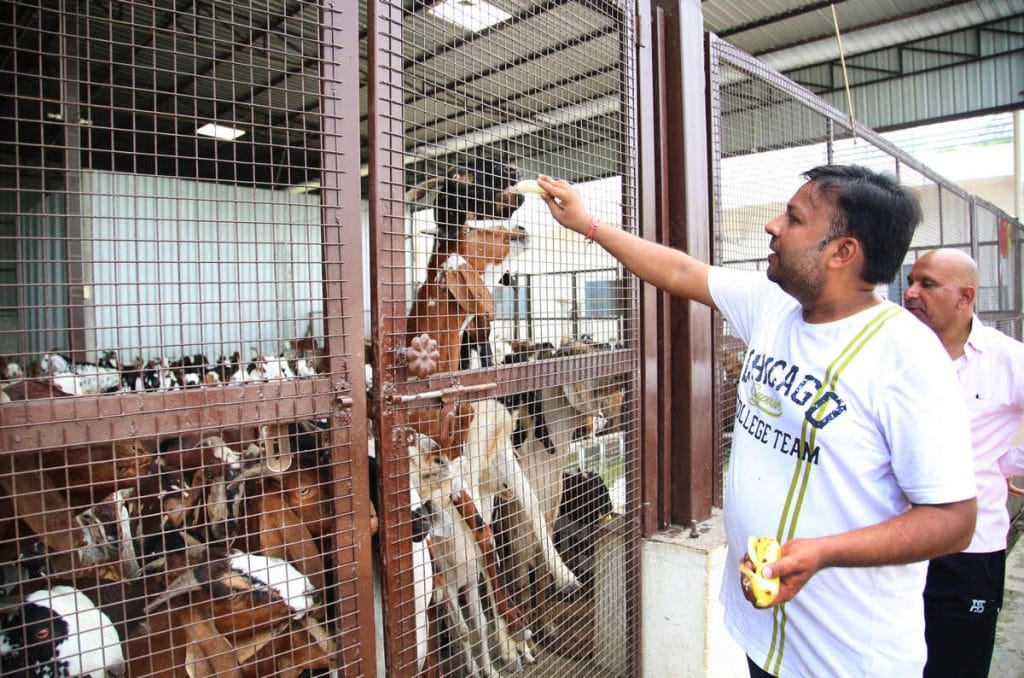
“These are all male goats which are slaughtered during Bakrid every year. I am a Hindu, but I appreciate Jains for saving these goats. I know the number is not big, but the idea is that by seeing such a goat shelter, more people will be inspired to open one. And soon, we will have goat shelters in every village,” said Kumar.
One of the trustees of the goat shelter, Sachin Jain, said they receive donations from community members across India to run the facility. Feeding the goats requires substantial funds; the first 15 days of June alone saw the shelter spending Rs 2.5 lakh on fodder, said supervisor Jain.
Regarding dressing up as Muslims to buy goats, the trustee claimed that it is a practice that Jains in North India have been following for several years during Bakrid.
“It’s not out of fear,” he said. “It’s because when sellers realise we are Jains saving goats, they often charge a higher price. The idea is to save as many goats as possible, and if dressing up helps achieve that, I find nothing wrong in it.”
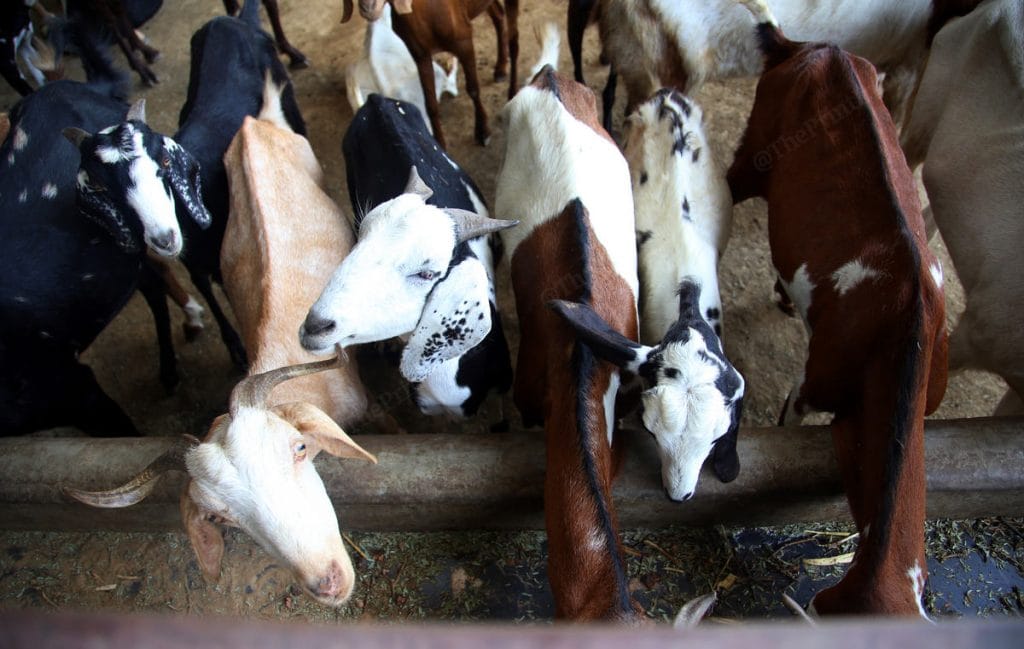
Nearby, his younger son offered bananas to the goats, flinching every time one of the animals approached him.
On the wall hangs a yellow-and-red poster. It provides an answer to the Hindi idiom, “Bakre ki maa kab tak khair manayegi?” (How long will the goat’s mother keep protecting her children?).
The poster reads: “Agar koshish sachi ho toh bakre ki maa jeevan bhar apne bachon ki khair manayegi.” (If the effort is sincere, the goat’s mother will protect her children for a lifetime.)
(Edited by Asavari Singh)



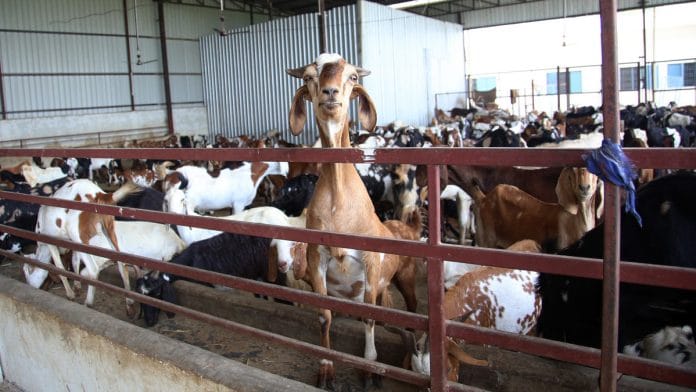



The Jain answer to Hindu ‘gaushalas’. Good. We need more of these initiatives. Such shelters can be monetized as tourist attractions, and for educational purposes to sensitize children to animal rights and the need for better ethical treatment of animals, including embracing vegetarianism. They can also create excellent volunteering opportunities for youth, and charitable giving opportunities for adults. Plenty of similar projects exist in the West.
And hopefully, the presence of practice of such shelters will encourage the Muslim community to become more thoughtful and progressive in its practices, perhaps even embracing vegetarianism over time.
Meanwhile human beings lead much worse lives probably meters from this shelter. The hypocrisy is staggering.
I really want to know how goats gargle. Please do an article on that. I want to teach my goat to gargle.
how long will these goats be alive? they’re not immortal and surely in a few yrs they’ll die… what will the jains do then? interfering into other religion’s affairs is a sin and jains have forgot this!! can these same jains stop bali or sacrifice of animals in hinduism itself? each day so much of chicken is sought after for meals…export of goat, sheep, veal… can they stop all this? it clearly shows they’re only communal minded and nothing else… instead of animals, they should work more towards the stopping of human killings as humans are more worthy than animals… isn’t it?